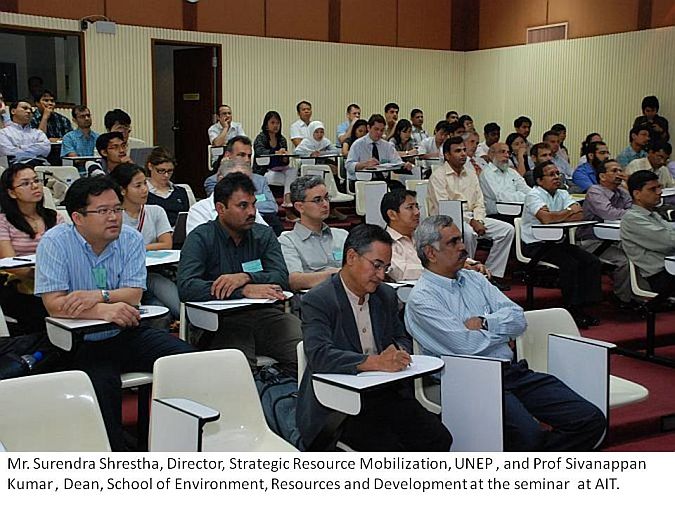
The next time you are taking a flight, look out of the window and you
could see some brown colored clouds. Instead of water, these brown
clouds are mostly made up of miniscule particles called aerosols
comprising of fly ash, black carbon, sulfates, nitrates, and hundreds
of organic compounds. The brown colored haze in the clouds is created
when sunlight falls on these aerosols.
This was revealed during a public seminar on “Atmospheric Brown
Clouds” delivered by Prof Teruyuki Nakajima, Chair of ABC-Asia and
Director of Center for Climate System Research, University of Tokyo at
the Asian Institute of Technology (AIT).
Introducing the topic, the Director of Strategic Resource
Mobilization, UNEP, Mr. Surendra Shrestha remarked that the study into
Atmospheric Brown Clouds originated at the AIT itself. Between the
years 2002-06, most countries were in a state of denial regarding
Atmospheric Brown Clouds, but today they have started focusing on the
science behind the phenomenon.
Prof. Nakajima stated that hot spots of Atmospheric Brown Clouds, or
ABCs as they are generally known as, include the Bangkok urban region,
Pacific Ocean cities in Japan, the mega cities in China and the entire
Indo-Gangetic plains in India. The Indo-Gangetic plain comprises of
hundreds of kilometers of contaminated atmosphere. Significantly this
lies just above some of the most fertile areas in India.
ABC is a global issue today and is no longer restricted to urban
areas. ABCs have been found frequently occurring over heavily inhabited
regions across the world. ABCs are trans-boundary, trans-oceanic and
trans-continental in nature. They arise from aerosols resulting from
biomass burning, industrial air pollution and indoor air pollution.
While Carbon Dioxide is relatively easy to monitor, ABCs are different
to monitor since there is a huge variety of aerosols which vary in
size, apart from their physical and optical properties.
According to Prof Nakajima, ABCs are global and apart from Asian Brown
Clouds, the world is now worried about African Brown Clouds and Latin
American Brown Clouds as well. Moreover, aerosols are a significant
factor in climate change since they result in a cooling of earth
surface temperature. “Future global warming issue is dependent on
aerosols”, Prof Nakajima remarked. He added aerosols are key to
understanding the amount of rainfall an area would receive. It now has
a significant effect on climate, water cycle, vegetation, agriculture
as well as health issues.
Earlier Prof Sivanappan Kumar, Dean, School of Environment, Resources
and Development stated that ABCs, which were initially found in South
Asia and China are now spreading towards South East Asia.

